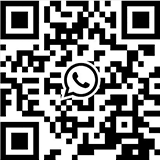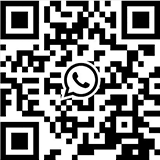EDITGENE CO., LTD

17800 Castleton St. Ste 665. City of Industry. CA 91748

info@editxor.com

+1-833-226-3234 (USA Toll-free)
+1-224-345-1927 (USA)
+86-19120102676 (Intl)

Technical Support

Support Center
Beijing Time: Monday to Friday, 8:00 AM - 6:00 PM
Toll-Free (USA): +833-226-3234
Direct Line (USA): +1-224-345-1927
Email: techsupport@editxor.com

After-Hours Support
Beijing Time: Monday to Sunday, 8:00AM - 6:00 PM
International Line: +86-19120102676
Email: info@editxor.com

Facebook Messenger
Reach out to us on Facebook Messenger for personalized assistance and detailed information.

Linkedin
Engage with us on LinkedIn for professional inquiries, the latest blogs, discoveries, and updates on our innovative work.
FAQ
What should I do if the transfection efficiency in target cells is low?
It is recommended to conduct a pre-transfection experiment before the main experiment. Try different transfection methods to find optimal conditions, such as common chemical transfection methods (e.g., lipofection) or physical methods (e.g., electroporation).
Does the Bingo™ CRISPR Point Mutation Cell Line Generation Kit recommend lipofection or electroporation?
The Bingo™ PE, pegRNA, and gRNA in the kit are all plasmids, compatible with both lipofection and electroporation. You can choose the appropriate transfection method and parameters based on cell type. Generally, adherent cells can be transfected by either method, while therapeutically relevant cells are recommended to use electroporation
Why do cells plated in a 96-well plate for single-clone screening grow slowly or die, even though single-clone formation was good in the pre-experiment?
Gene mutations may affect cell viability. Before conducting a gene point mutation experiment, it is advisable to consult relevant literature to understand the function of the target gene. If the target gene plays a critical role in cell proliferation or survival, point mutations may hinder these processes, making it difficult to obtain positive cells.
How can I verify the editing activity of the Bingo™ CRISPR Point Mutation Cell Line Generation Kit?
The kit’s Positive Control has been validated in HeLa cells (human gene) and N2a cells (mouse gene). Due to the high heterogeneity of cells, transfection and editing efficiency may vary in different cell types using the same kit.
Can cells constructed with the Bingo™ CRISPR Point Mutation Cell Line Generation Kit be stably passaged?
Yes. The Bingo™ CRISPR Point Mutation Cell Line Generation Kit targets genomic DNA for gene mutation, allowing the genotype of the target cells to be stably inherited by subsequent generations.
Can the kit detect Mycoplasma in reagents?
The kit can detect Mycoplasma in common cell culture reagents, such as media and serum, without the need for sample preparation. Simply proceed directly to PCR reaction and gel loading. However, the kit cannot detect Mycoplasma in organic solvents like DMSO or ethanol.
Inconsistent results with repeated testing
PCR detection of Mycoplasma is highly sensitive, so avoid cross-contamination between samples. Ensure sterile conditions when handling each sample individually. After sample processing and PCR reaction, allow samples to cool before proceeding to the next step to avoid aerosol contamination.
Bands appear in the negative control
Use a freshly opened negative control for retesting. Ensure to change pipette tips during sample loading and prioritize loading the negative control first to avoid cross-contamination between samples.
Cell death or poor cell condition after Mycoplasma elimination
For most cell lines, mycoplasma elimination has no impact on cell health. However, for sensitive cells, it is recommended to create backups before treatment. If cell death or poor conditions occur, reduce the working concentration by half and extend the treatment period to 28 days.
Can it be used with conventional antibiotics like penicillin, streptomycin, amphotericin, or gentamicin?
Since this reagent already provides antibiotic functions, additional antibiotics are not recommended during the treatment to reduce stress on cells.
Residual Mycoplasma after treatment
Mycoplasma should be nearly completely eliminated. If contamination persists, increase the working concentration by 50% and repeat the treatment for one cycle.
Cell death or poor cell condition after Mycoplasma elimination
For most cell lines, Mycoplasma elimination does not affect cell health. However, for sensitive cells, it is recommended to back up the cells before treatment. If cell death or poor conditions occur, reduce the working concentration by half and extend the treatment cycle to 28 days.
Residual Mycoplasma detected after treatment
In most cases, mycoplasma should be completely eliminated after treatment. If residual contamination persists, increase the working concentration by 50% and repeat the treatment for another cycle.
Can this reagent be used alongside conventional antibiotics like penicillin, streptomycin, amphotericin, or gentamicin?
Since this reagent already provides antibiotic functionality, additional antibiotics are not recommended during the treatment to avoid adding unnecessary stress to the cells.
Can MycoE-A and MycoE-B be used simultaneously?
No, simultaneous use of both reagents places excessive stress on cells and increases the likelihood of resistance development. Use the reagents sequentially according to the instructions.





 Room 501, Building D, International Business Incubator, No.3 Juquan Road, Science City, Huangpu District, Guangzhou, Guangdong, China 510663
Room 501, Building D, International Business Incubator, No.3 Juquan Road, Science City, Huangpu District, Guangzhou, Guangdong, China 510663
